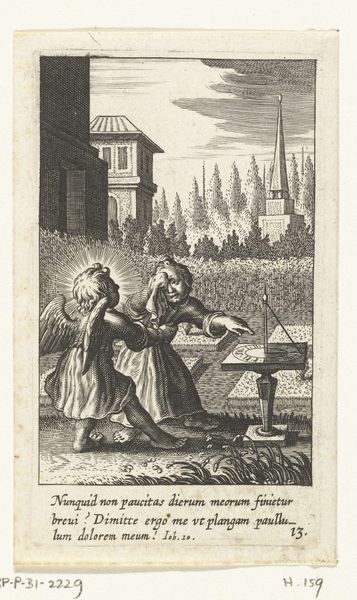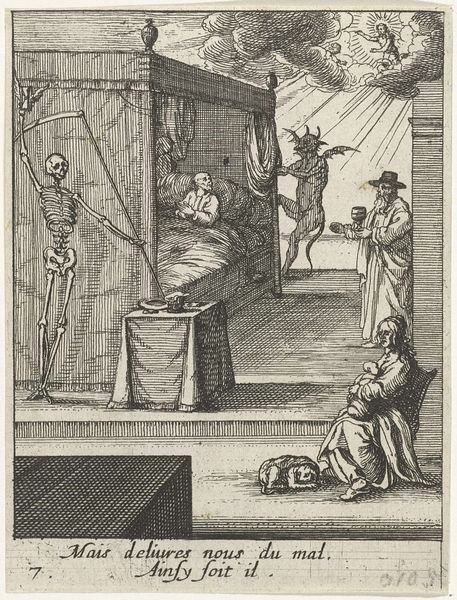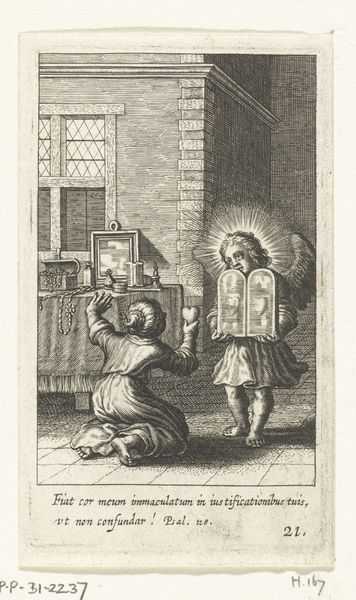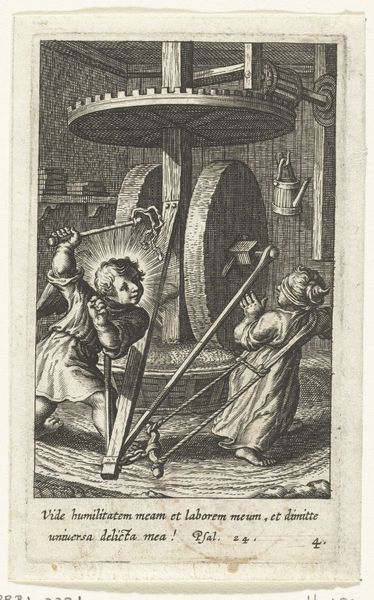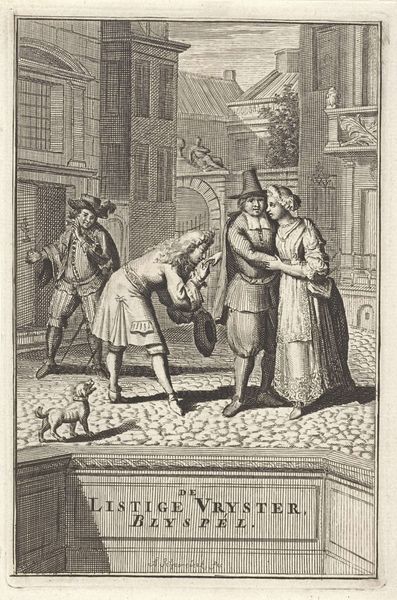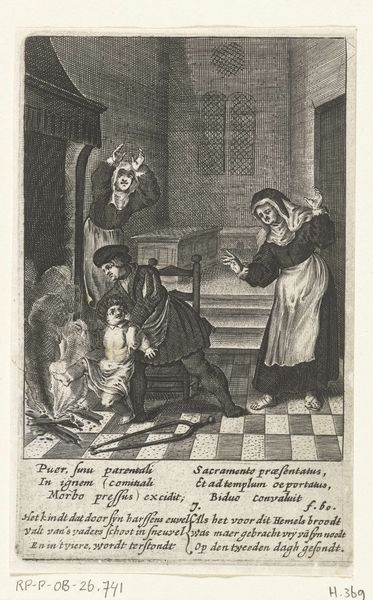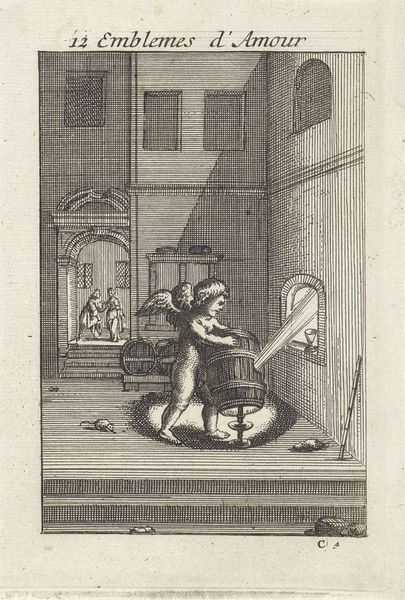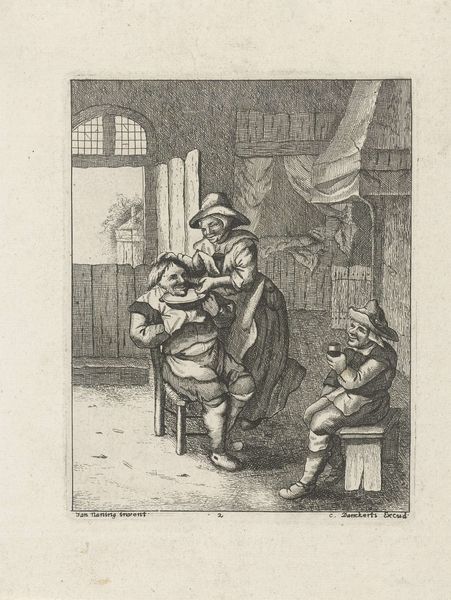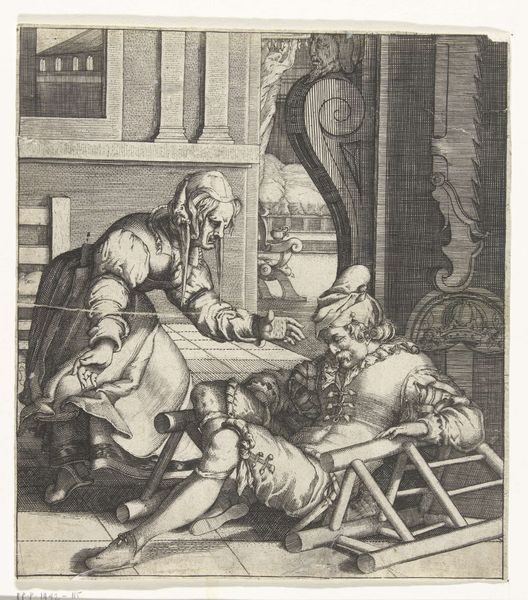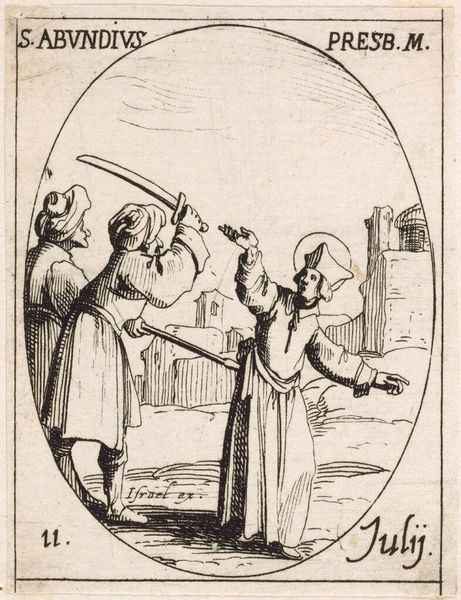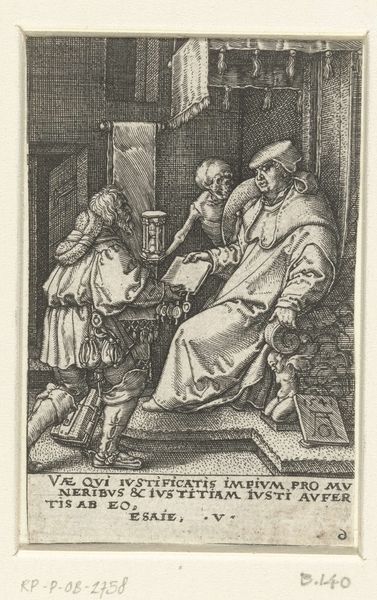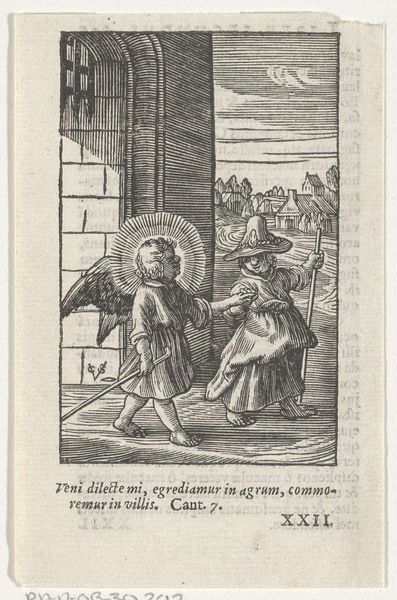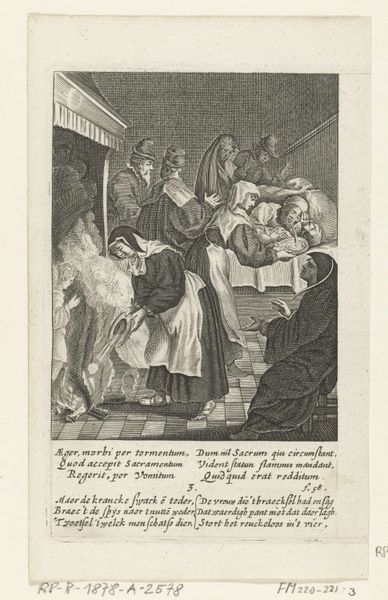
print, pen, engraving
#
allegory
#
baroque
# print
#
old engraving style
#
traditional media
#
figuration
#
pen-ink sketch
#
pen
#
northern-renaissance
#
engraving
Dimensions: height 95 mm, width 57 mm
Copyright: Rijks Museum: Open Domain
Editor: This is "Engel leert kind lopen in looprekje" by Boëtius Adamsz. Bolswert, created sometime between 1590 and 1624. It's a print, and it shows an angel guiding a child in a walking frame. It has a strangely melancholic feel to it despite the apparent act of teaching and care. How do you interpret the symbolism and the historical context of this image? Curator: That's a perceptive reading. The melancholic tone you identify might stem from the sociopolitical context of the time. Consider the function of prints like this one. They weren't just decorative; they often served didactic purposes, disseminating moral and religious ideals within a rapidly changing society. The angel assisting the child, set against that backdrop of architecture, represents not just divine aid, but also perhaps the *ideal* path for the young – guided by faith. Do you notice anything about where this scene is located? Editor: Well, there are some interesting architectural elements, a wall and some buildings with classical elements…almost like a town square that has been shut in or reduced. Curator: Exactly. That enclosed space speaks volumes. During the early 17th century, we see shifts in urban planning and ideas around public and private space. An engraving like this one might then be subtly commenting on the proper spaces for development, childhood and spiritual guidance. Editor: So, the physical setting isn't just background; it actively shapes how we should understand the relationship between the angel and the child. It makes me wonder who the intended audience for this print was? Curator: A great question. Prints were often aimed at a middle-class audience seeking affordable art that reinforced certain values, values tied into ideas about civic duty and proper behaviour in public spaces. So, the angel teaching the child to walk might be symbolic of instructing them in these societal norms from an early age. Editor: It is amazing how much history is packed into what initially seemed like a simple image. I didn’t consider the impact of urban planning on the perception of spiritual guidance, and vice versa. Curator: Precisely! Looking at art as an agent within history, we start to ask important questions about not just beauty, but influence and intent. It enriches the viewing experience, wouldn't you agree?
Comments
No comments
Be the first to comment and join the conversation on the ultimate creative platform.
